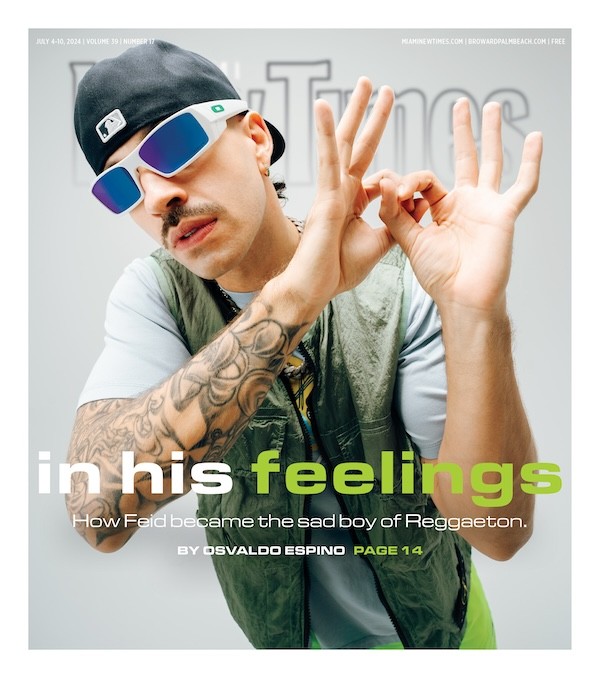If you’re a Cuban woman in Miami, maybe you heard Camila Cabello’s “Havana” for the first time and groaned. Or maybe you teared up when your mom said she could relate to the song’s chorus: "Havana, ooh na-na/Half of my heart is in Havana, ooh-na-na."
“Havana,” the newest single off Cabello’s upcoming debut album, The Hurting, the Healing, the Loving, is a love letter to the singer’s hometown of Cojimar, just outside Havana, Cuba. On the surface, “Havana” is a pop song about a sexy, whirlwind affair with a mysterious lover during a brief trip to the island. In the greater context of the American gaze on Cuba after more than 60 years of stalemate, however, “Havana” allows a new generation to imagine the Pearl of the Antilles.
This isn’t Cabello’s first musical nod to Cuba. Earlier this year, she appeared on J Balvin and Pitbull’s “Hey Ma” for The Fate of the Furious soundtrack. The music video was filmed in Havana, and Cabello sings proudly atop an antique Chevy while Pitbull raps, "Pa’lante con la libertad de Cuba/Y que la isla entera suba — ahead with Cuba’s freedom/Let the whole island rise."
In the way of outdated Cuban tropes in the American consciousness, “Havana” really has it all. In the single’s cover art, Cabello looks like actress Penélope Cruz in the poster for filmmaker Pedro Almodóvar’s Volver, embodying the gorgeous Latin-bombshell look originated in Spain. Then there’s the Latin lover — charming yet “malo” — who whisks Cabello away from Young Thug and her fated trip back to east Atlanta and away from the allure of making out on top of the 1950s Chevys that litter the Instagram feeds of every gringo who has ever visited Cuba.
Since President Obama in 2014 announced his resolution to normalize relations with Cuba after decades of embargo, Americans have looked again and again to Cuba for culture — hungry to sink their teeth back into an island that has struggled to define its political identity for centuries. One can’t help but think of the Chiquita banana commercials of the '50s that equate a key export crop and American investment to the Caribbean female body, both objects to be reaped by the just and deserving colonizer.
Two years later, all manner of American enterprises have been taking advantage of relaxed travel and trade policies (until Donald Trump follows through with his muddy Cuba plans). Aerie’s Besitos de Habana campaign replaces the Chiquita banana of yesteryear via five slender, mostly white American models riding Vespas through Old Havana while sporting their cute bralettes and half-assed inclusivity. (Then there’s this mess.)
Sounds awful, yes? Yet the song doesn’t. Its midtempo clave piano riff and minor-key trumpet solos are simplified, as a musician who grew up hearing her parents’ Cuban records might arrange them, but faithful to the original. The song's pieces should come off as a pastiche of a romanticized Cuba — and they do. Yet the album's sincerity, its desire to know the island beyond the colonized symbols of its history, inspire hope for young Cuban-Americas to honor their roots in the Cuba of today.
If you dig a little deeper, you’ll find that Camila is aware of her halfway status as a Cuban-born, Miami-raised American. During her live performance of the single on The Tonight Show last week, Cabello added a verse not present in the recorded single: "I knew I was there when I read the signs ('Welcome to la Yuma!')," she sings, aware of her yuma, the air given off by an American on the island.
Young Thug, whose presence requires half the song be about him, is arguably to blame, but perhaps this is the price of a Billboard chart hit.
If there’s one thing Cubans, native and yuma, are good at, it’s reading signs. After centuries of colonial mistreatment, American saviorism that became colonial mistreatment, and a 20th Century riddled with promise-happy leaders, the one constant is a nation of people industrious and inventive to its core. Its immigrant community, of which Camila Cabello is a vocal member, spread that invention all over the world.
Catch us crying in the club not over a lost lover but to “Havana” — the first media sensation to genuinely honor Cuba's culture over its profitability.
[
{
"name": "Air - MediumRectangle - Inline Content - Mobile Display Size",
"component": "19274298",
"insertPoint": "2",
"requiredCountToDisplay": "2"
},{
"name": "Editor Picks",
"component": "17482312",
"insertPoint": "4",
"requiredCountToDisplay": "1"
},{
"name": "Inline Links",
"component": "18711090",
"insertPoint": "8th",
"startingPoint": 8,
"requiredCountToDisplay": "7",
"maxInsertions": 25
},{
"name": "Air - MediumRectangle - Combo - Inline Content",
"component": "17482310",
"insertPoint": "8th",
"startingPoint": 8,
"requiredCountToDisplay": "7",
"maxInsertions": 25
},{
"name": "Inline Links",
"component": "18711090",
"insertPoint": "8th",
"startingPoint": 12,
"requiredCountToDisplay": "11",
"maxInsertions": 25
},{
"name": "Air - Leaderboard Tower - Combo - Inline Content",
"component": "17482313",
"insertPoint": "8th",
"startingPoint": 12,
"requiredCountToDisplay": "11",
"maxInsertions": 25
}
]











